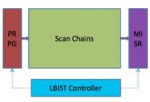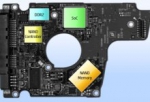D&R Industry Articles (July 2014)
Articles for the Week of July 28, 2014
Additional Articles- Deliver at 100G: The impact of smart memory
- A Win-Win Royalty Deal Structure in IP Business
- MBIST verification: Best practices & challenges
Articles for the Week of July 21, 2014

Challenges in LBIST validation for high reliability SoCs
Logic built-in self test (LBIST) is being used in SoCs for increasing safety and to provide a self-testing capability. LBIST design works on the principle of STUMPS architecture. STUMPS is a nested acronym, standing for Self-Test Using MISR (Multiple Input Signature Register) and Parallel SRSG (Shift Register Sequence Generator).- Designing optimal wireless base station MIMO antennae: Part 2 - A maximum likelihood receiver
- Advanced Driver Assistance Systems: Let the Driver Beware!
- Is Your Processor IP ISO 26262-Compliant?
- Design clock controllers for hierarchical test
- Designing optimal wireless basestation MIMO antennae: Part 1 - Sorting out the confusion
Articles for the Week of July 14, 2014

Development of a Hybrid Drive that Combines Large Capacity and High-Speed Performance
The hybrid drive, which combines the cost advantage of rotating magnetic disc storage with the high performance of NAND flash memory, has recently been attracting attention from computer users looking for fast, large capacity drives. The combination of a hard disk drive (HDD) and NAND flash memory has the potential to deliver a solid-state drive (SSD) like user experience.- Validating and using the I2C protocol
- CDC verification of billion-gate SoCs
- Low Power High Density Clock Gate
Articles for the Week of July 7, 2014

Enabling a new generation of connected devices
We're at the beginning of a new technological revolution: an era where thousands of hitherto disparate and unrelated devices will become connected and able to share information via cloud-based services. Imagine a world where your tablet is automatically populated with the latest movies, simply because you placed a diary entry on your smartphone indicating you were taking a long-haul flight. Or where your home routinely switches into an energy-saving mode after the last person departs the house, and predicts when someone is likely to return based upon GPS data from their smartphone. Or a message indicating all is well with a dependent relative, triggered automatically by them following their normal morning routine of taking their medication, turning on the TV and boiling the kettle.- Reduce SoC verification time through reuse in pre-silicon validation
- The Internet of Things Can Drive Innovation - If You Understand Sensors
- SystemVerilog versus SystemC
- Five steps to reliable, low-cost, bug-free software with static code analysis
Articles for the Week of June 30, 2014
Additional Articles








